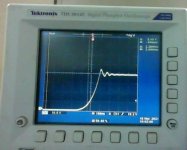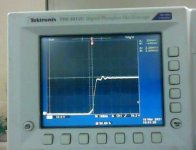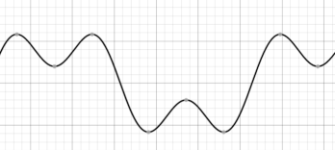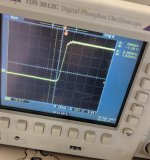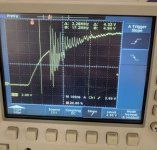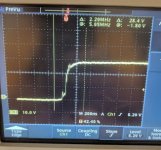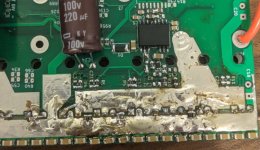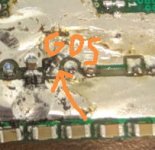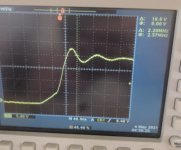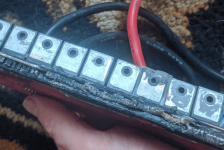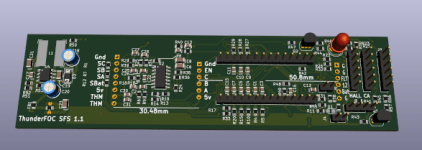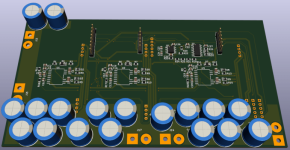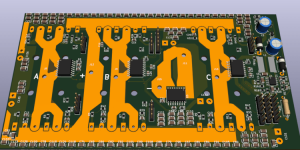thorlancaster328
100 W
- Joined
- May 25, 2018
- Messages
- 197
I finally got around to replacing the gate resistors.
@mxlemming you were correct about the gate resistors being too low, switched 4.8r to 8.2r and there was only 4v of ringing at 20v, 6v at 40v. Ringing is still almost completely independent of phase current at above 20 amps. Total switching times (Id increase and Vds decrease) are around 150 nanoseconds, which is a bit longer than ideal but the FETs still run pretty cool.
High- and Low-side gate drive waveforms are nearly identical.
View attachment 1
There is a bit of bouncing (~2 volts) when the gate drive to the FETs crosses the threshold voltage, but it only increases slightly with voltage and very slightly with phase current.
I can't do any high-power motor tests because Vector sent me the wrong motor and I can't clamp it in my frame. When the correct motor arrives (1-2 weeks), I'll put the scope on it again and see how it switches at higher voltages and currents.
If all goes well with that test, the next version of this controller (using 36 TO-220 FETs) will go off to JLCPCB to get produced. Fingers crossed that the next controller can switch faster.
@mxlemming you were correct about the gate resistors being too low, switched 4.8r to 8.2r and there was only 4v of ringing at 20v, 6v at 40v. Ringing is still almost completely independent of phase current at above 20 amps. Total switching times (Id increase and Vds decrease) are around 150 nanoseconds, which is a bit longer than ideal but the FETs still run pretty cool.
High- and Low-side gate drive waveforms are nearly identical.
View attachment 1
There is a bit of bouncing (~2 volts) when the gate drive to the FETs crosses the threshold voltage, but it only increases slightly with voltage and very slightly with phase current.
I can't do any high-power motor tests because Vector sent me the wrong motor and I can't clamp it in my frame. When the correct motor arrives (1-2 weeks), I'll put the scope on it again and see how it switches at higher voltages and currents.
If all goes well with that test, the next version of this controller (using 36 TO-220 FETs) will go off to JLCPCB to get produced. Fingers crossed that the next controller can switch faster.


